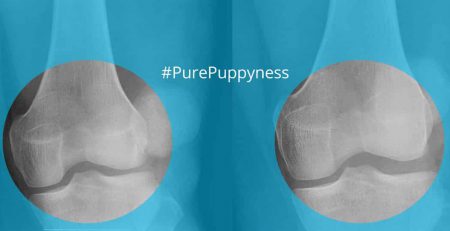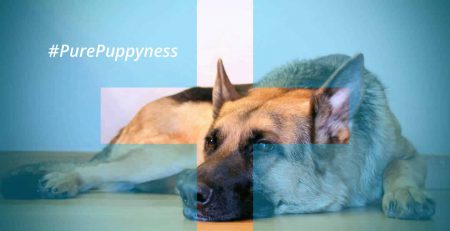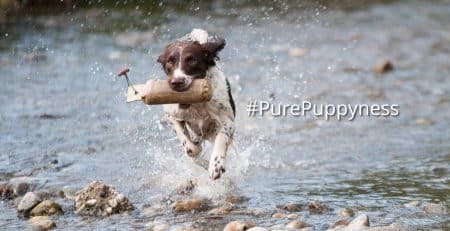Campylobacter: What dog owners should know
Is your dog lethargic, or perhaps feverish? Does he/she have diarrhoea? And have they eaten any raw chicken recently? It could be that your dog has contracted a campylobacter infection. Campylobacter can be a nasty, though not usually lethal infection – especially since humans can also catch it! Fear not: the NewDoggy is here to advise you.
What is Campylobacter?
Campylobacter is a type of bacteria that causes infectious diarrhoea. Campylobacter jejuni is probably the most common species to cause illness in dogs.
How does a dog catch Campylobacteriosis?
Dogs usually catch Campylobacter via contaminated food or water, or by coming into contact with the faeces of an infected animal. Poultry meat (especially chicken meat) can carry the bacterium. This is because poultry naturally have Campylobacter in their digestive tracts. Cooked chicken is typically safe, but raw or undercooked chicken is very risky. Young dogs and dogs that eat a raw food diet are most at risk of catching Campylobacter.
What are the symptoms of Campylobacteriosis?
Many dogs carry Campylobacter bacteria in their digestive systems without any signs, but some dogs will get ill. An infected dog may show all or some of these symptoms:
- Diarrhoea (which varies from watery to mucous-like), which may contain blood
- Straining to defecate
- Abdominal pain
- Lethargy
- Fever
- Vomiting
Vomiting and diarrhoea can quickly dehydrate your dog, which can be lethal. You should consult a veterinarian for advice as soon as possible.
How is a Campylobacter infection diagnosed?
Diagnosis is usually based on the dog’s symptoms. Your dog’s history is also useful; for example, if your dog typically eats raw food, this could point towards a Campylobacter infection.
If your veterinarian suspects Campylobacter and wants to confirm this diagnosis, they will send a sample of your dog’s faeces to a laboratory for testing. The sample can be cultured, and the antibiotic sensitivity of the bacteria tested. It is also possible to carry out a PCR test and basic microscopic examination of the sample.
How is a Campylobacter infection treated?
If it is only a mild case, the infection should resolve itself in a few days. If the illness continues for more than a few days, then your dog will need treatment. If a dog is ill, the veterinarian may need to start treatment without waiting for a confirmation of the diagnosis from the laboratory. Fluid therapy will help to correct any dehydration.
Your dog may also need antibiotics, and perhaps medicine to reduce nausea or abdominal pain. A laboratory test to check which antibiotics the bacteria is sensitive to is helpful for a successful treatment.
If your dog has Campylobacter, be sure to thoroughly clean and disinfect any bedding, bowls, or toys. Regularly wash and disinfect your hands.
Is Campylobacter harmful to humans?
Some, but not all, species of Campylobacter can infect humans. There is a small risk of catching Campylobacter from your pet, though you are far more likely to catch this bacterium from contaminated food. Those most at risk are the young, the elderly, and those who are ill or have lowered immunity. In humans, Campylobacteriosis usually resolves itself, but in some cases it can cause severe diarrhoea, abdominal pain, fever, and vomiting. In very rare cases it can trigger arthritis and even temporary paralysis.
How can Campylobacteriosis be prevented?
Good hygiene is the best way to prevent this illness. Clean up any faeces or soiled areas around the home, and regularly wash your dog’s bedding. If your dog is infected, regularly wash and disinfect your hands, and don’t let your dog lick anyone’s face.






















